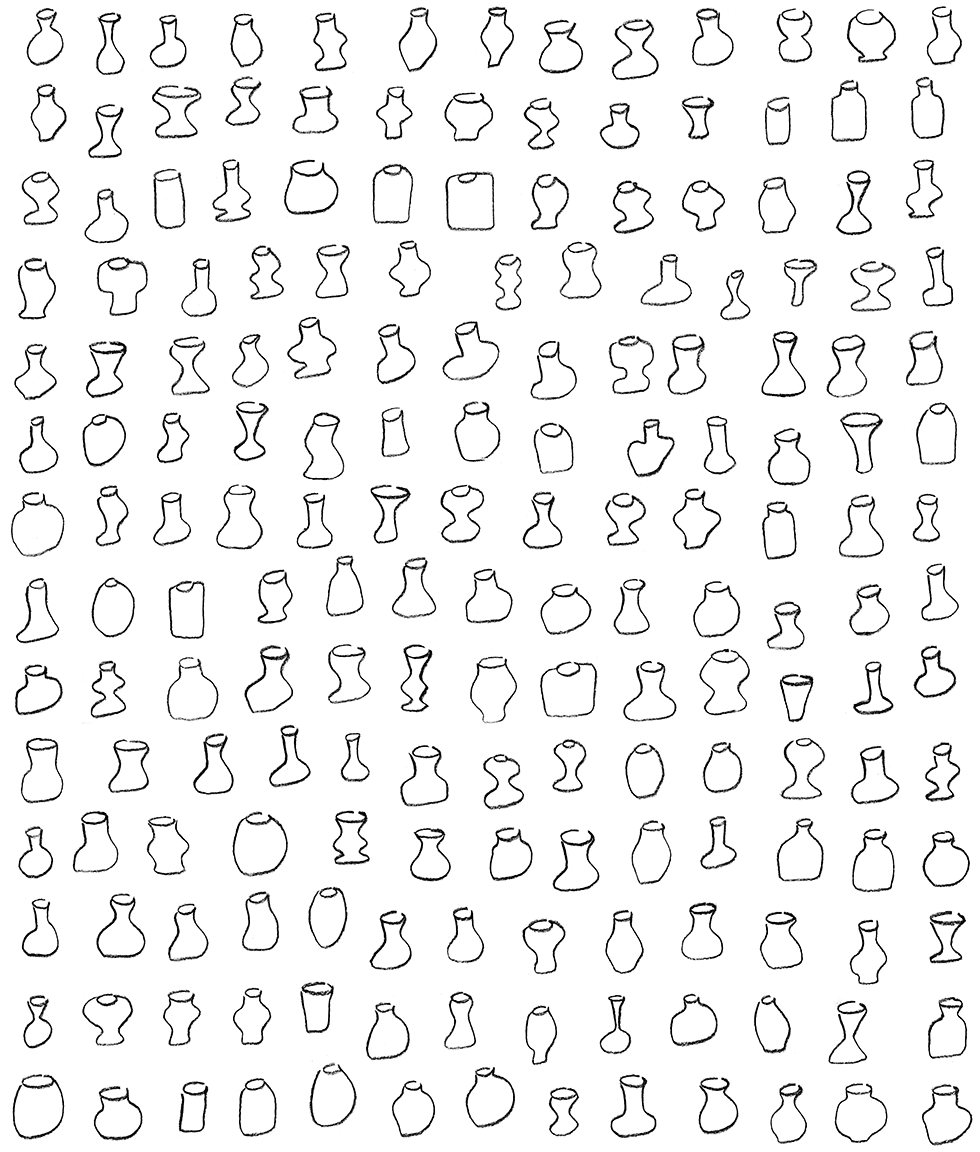artist statement
Artist Statement
The ceramics teacher announced he was dividing his class into two groups. All those on the left side of the studio would be graded solely on the quantity of work they produced, all those on the right graded solely on its quality.
His procedure was simple: on the final day of class he would weigh the work of the “quantity” group: 50 pounds of pots rated an A, 40 pounds a B, and so on. Those being graded on “quality”, however, needed to produce only one pot—albeit a perfect one—to get an A.
Well, come grading time and a curious fact emerged: the works of highest quality were all produced by the group being graded for quantity!
It seems that while the “quantity” group was busily churning out piles of work—and learning from their mistakes—the “quality” group had sat theorizing about perfection, and in the end had little more to show for their efforts than grandiose theories and a pile of dead clay.
— Art and Fear
The smushes symbolize the primacy of the artistic process and the irrelevance of the process’s results.
Henry James once proposed three questions one could productively ask about an artist’s work:
What was the artist trying to achieve?
Did they succeed?
Was it worth doing?
I, on the other hand, think there’s only one question you can ask about a piece of art: did it play a role in its creator’s development?
An artist’s “output” is making progress. Everything else is a scrap.



